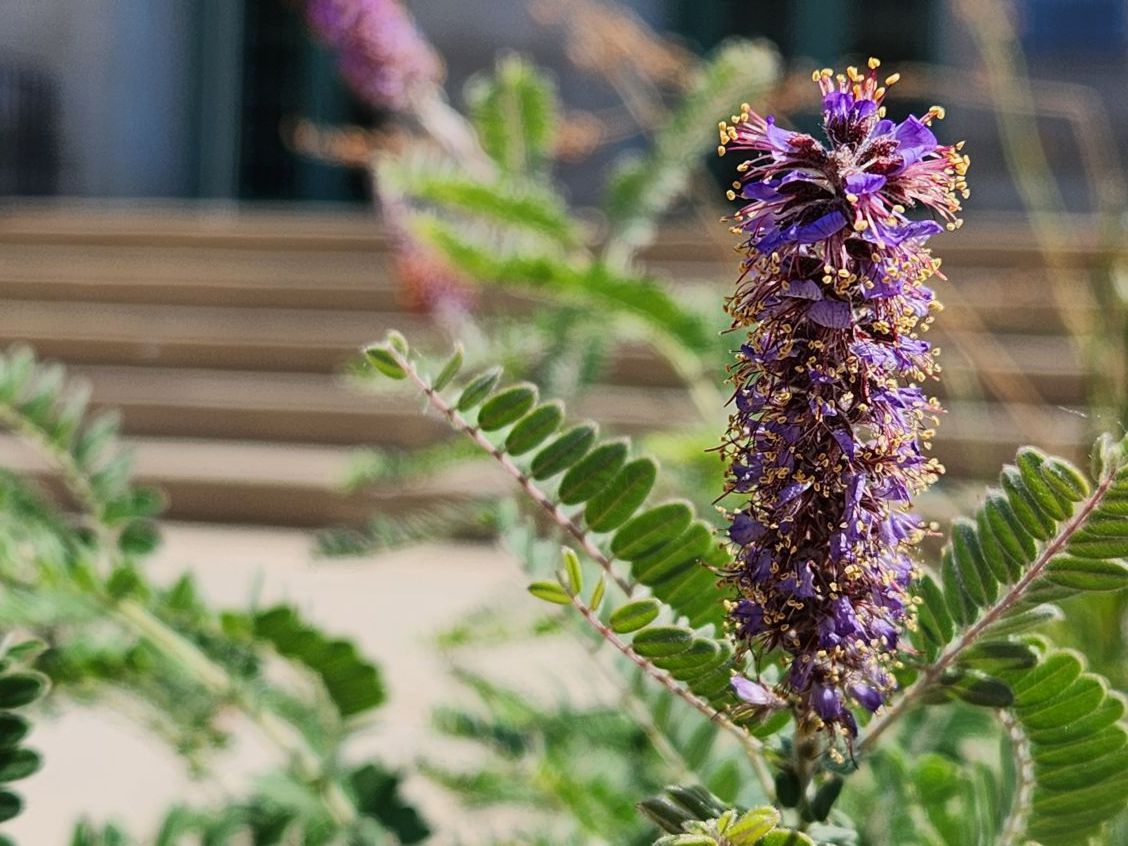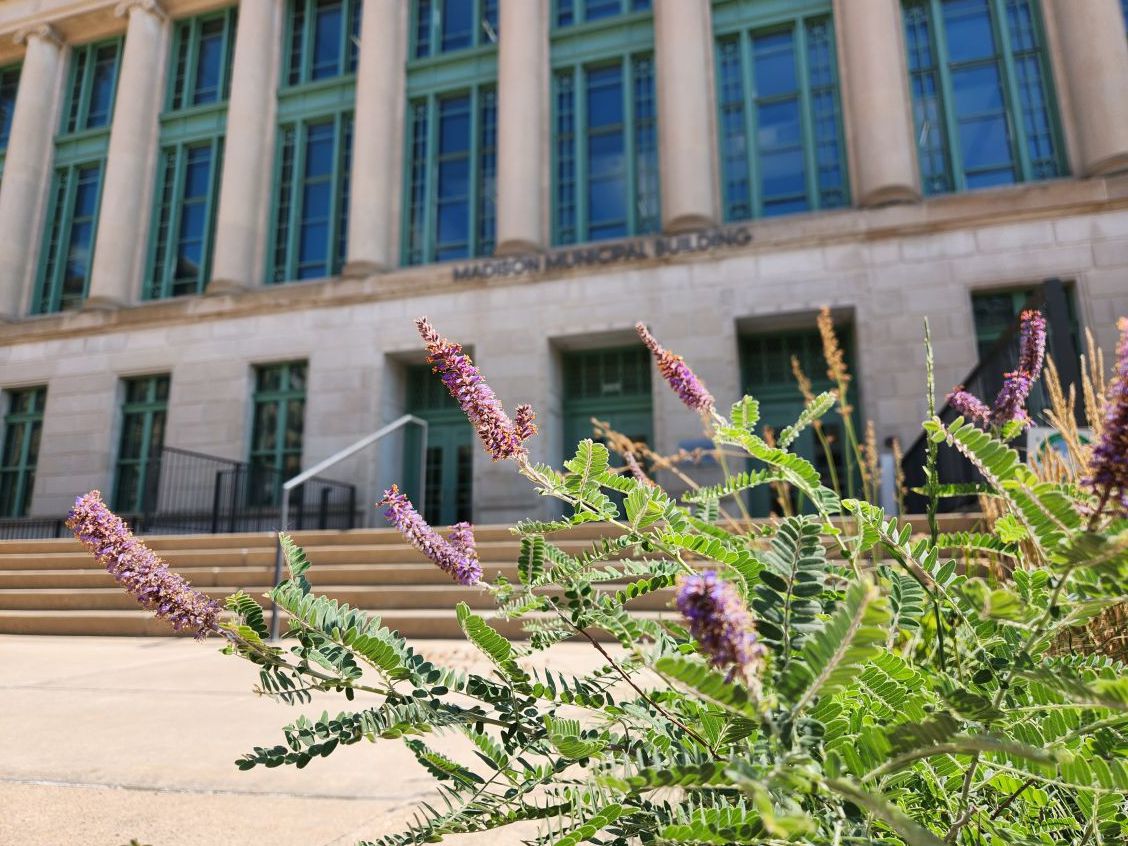Plant of the Week: Amorpha Canescens
posted
Bring me a shrubbery!
This week, we are featuring the native shrub lead plant, or Amorpha canescens. Lead plant is one shrub species that you may find in a prairie ecosystem, its roots extending up to 15 feet making it tolerant to the fires that prairies need to persist. It can be recognized it by its dusty gray-blue foliage and bright spikes of purple flowers which are punctuated with bright orange stamens. It is in the legume family, which means that it can take atmospheric nitrogen and fix it into the soil making it available to other plants sharing the space. Like a good neighbor, lead plant is there. Lead plant can be used as an indicator species for high-quality remnant prairies.
What’s a remnant prairie, you ask? Remnant prairies are bits and pieces of the land that remain unplowed or otherwise undisturbed, leaving the original plant community intact. The Wisconsin DNR states that of the 2.1 million acres of prairies that existed when settlers arrived 150 years ago, less than 10,000 acres of that still exist today. If you want to check out one of these special remnant sites, take the short drive up 113 to Westport Drumlin State Natural Area and take a hike! Remnant ecosystems can often be found on features like this steep, rocky glacial drumlin since using agricultural equipment there wouldn’t exactly be a picnic.
Lead plant is often included in prairie restoration efforts. We are lucky to have some populations of it in drier areas of our stormwater land and try to promote this species and its prairie counterparts wherever possible. It also makes a great addition to a garden or a planter; you may have noticed that this photogenic shrub was included in the planters outside the Madison Municipal Building!
Whatever your opinion on this plant, we think it’s pretty metal.
By: Emily Jorgensen, City of Madison Engineering Division Conservation Technician
Each week during the growing season, the Engineering Division focuses in on a Plant of the Week to raise awareness of different plants in the field that benefit our environment. The Engineering crews in the field tasked with conservation share expert insight on these plants and their benefits each week in a creative way!


